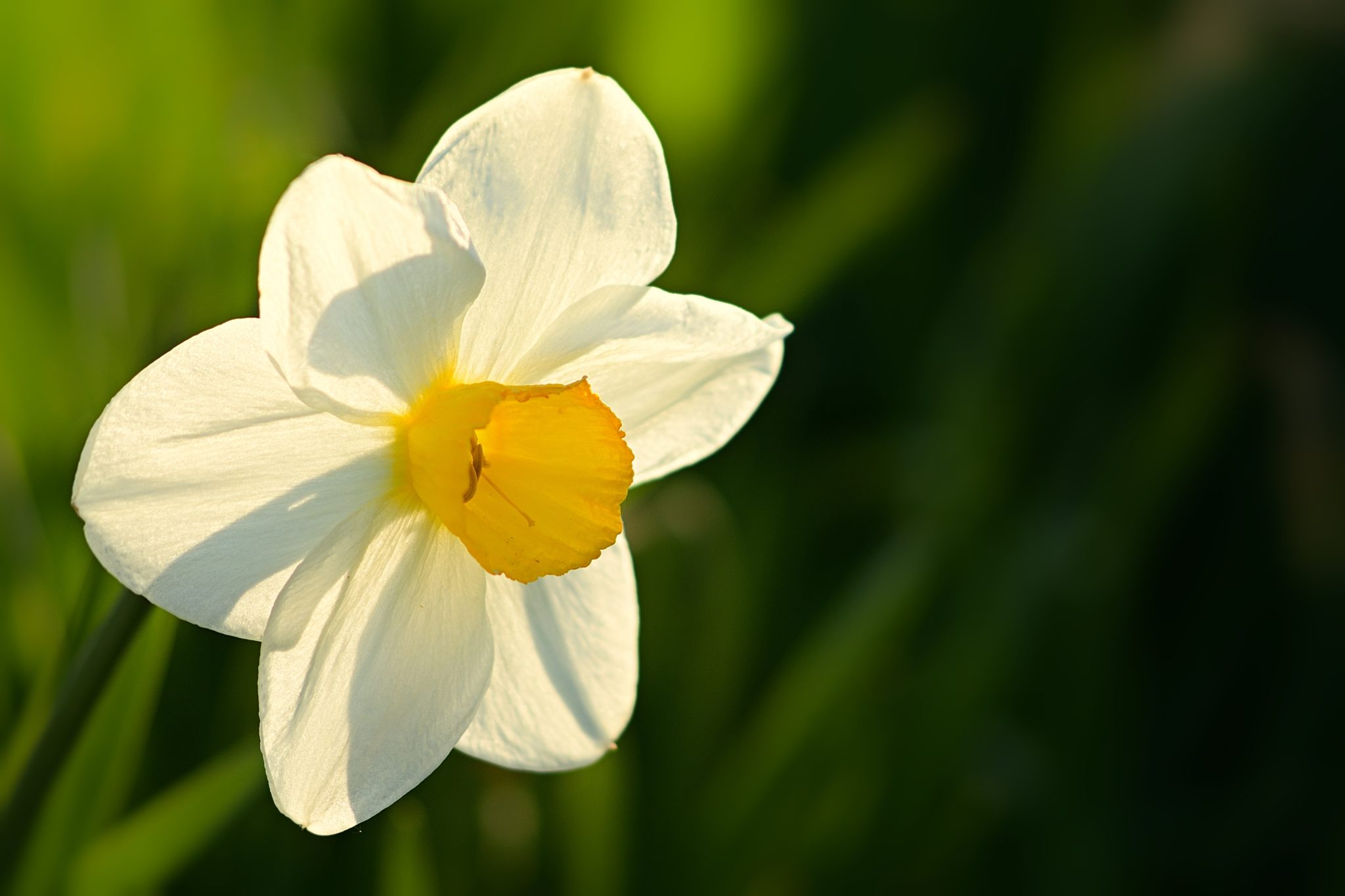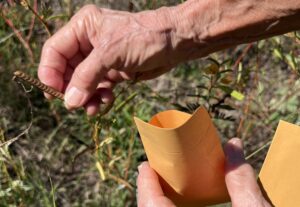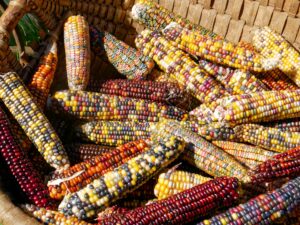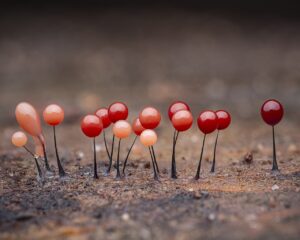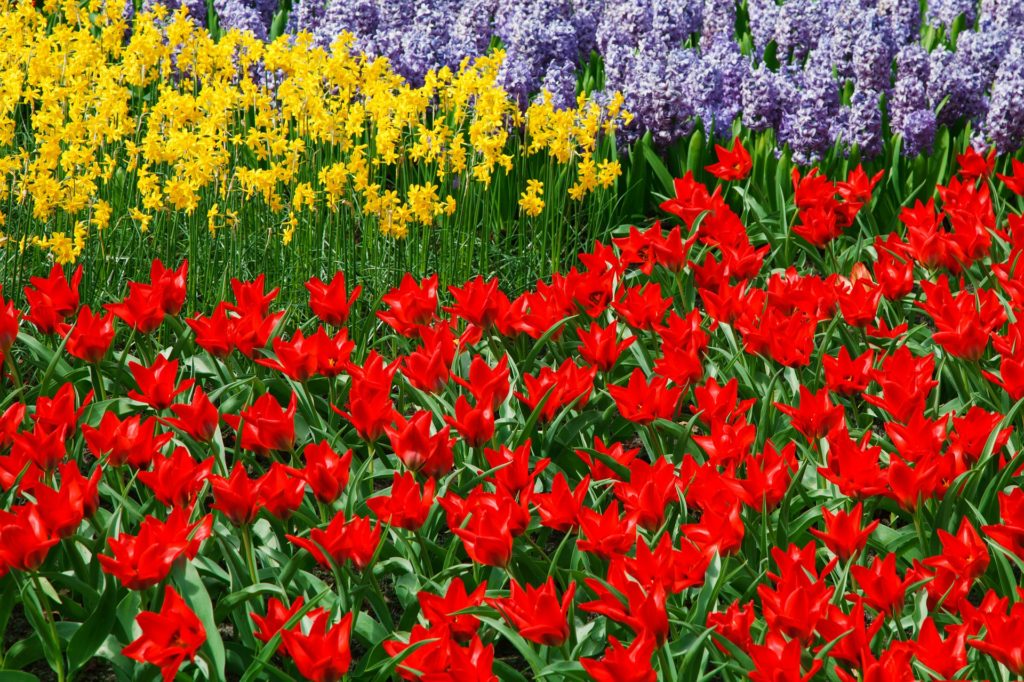
December is bulb-planting month in the Garden. For the third consecutive year, grounds staff and volunteers have embarked upon the arduous task of planting thousands of bulbs throughout the Garden for a spectacular spring display.
This year, nearly 150,000 bulbs are being planted. Most of these are tulips, but the mix also includes daffodils, hyacinths, crocus, ranunculus and a few other minor bulbs. There’s nothing “minor” about planting any of these bulbs, however. All of the planting will be done by hand.
“It’s a lot of work to plant this many bulbs, but the results will be stunning in March and early April,” says Sr. Horticulturist Steve Huddleston.
In addition, another 60,000 daffodils were planted on the east vista in the Garden. This is the open, grassy area between the Rose Garden’s reflection pond and University Drive. These bulbs were planted with an automated bulb-planting machine procured through Brent and Becky’s Bulbs in Virginia.
This machine is capable of planting 60,000 bulbs in four to five hours, which saves the backs, knees and hands of grounds staff and volunteers. This bulb-planting machine is a major investment even for a botanic garden, so it’s not something you can use in your own home landscape. Nevertheless, now is the time to get your own bulbs in the ground in order to guarantee yourself a colorful spring.
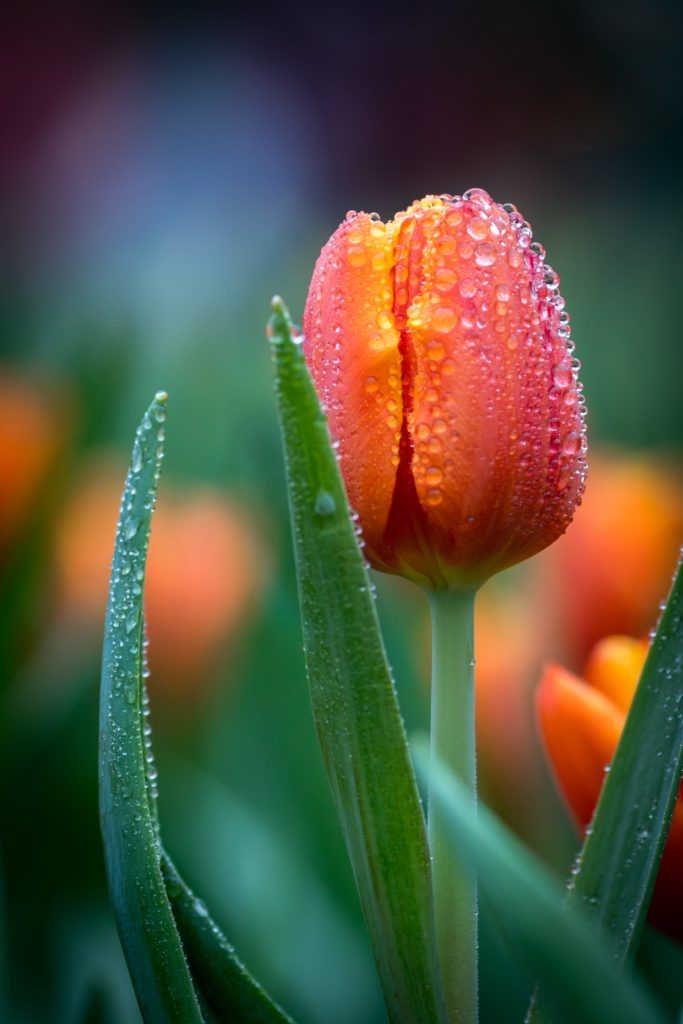
General Planting Information
Light and soil conditions. It’s generally best to pick a sunny location, since almost all bulbs prefer full sun. A few, however, will tolerate the dappled shade such as that found beneath deciduous trees. One of the most shade-tolerant bulbs is Scilla siberica, and a good cultivar is ‘Spring Beauty.’
Most bulbs prefer well-drained, organically-enriched soil. However, many of the bulbs mentioned in this article will tolerate various soils, including clay soils.
Planting depth. The general guideline for planting depth is three times the bulb’s height. In a clay soil, however, the bulb is better off planted too shallow than too deep.
Fertilizing. Scott Ogden, author of Garden Bulbs for the South, recommends dispensing with fertilizing altogether. He contends that alkaline soils typically found in north Texas tie up the nutrients in bone meal and superphosphate, two common bulb fertilizers. Other sources recommend fertilizing bulbs in the fall when the bulbs are initiating new roots and actively absorbing nutrients. Such sources recommend topdressing bulbs with a slow-release fertilizer such as 5-10-20, which is high in phosphorus and potassium.
Companion planting. Companion planting with other bulbs adds special effects and splashes of color to the spring garden. For example, bulbs can be layered by planting tulips 6” deep, daffodils 4” deep, and crocuses on top at 2” deep. Companion plants such as perennials, annuals and ground covers help mask maturing bulb foliage. Consider inter-planting bulbs with such spring annuals as pansies, alyssum, dianthus or snapdragons for a really gorgeous display of color.

Daffodils (Narcissus spp.)
These beautiful and beloved flowers are the harbingers of spring. Daffodils are divided into eleven divisions, or classifications, based on flower characteristics. Some divisions more better suited to north Texas than others.
Division II includes several several good cultivars for our area; this division features one flower to a stem. Good choices include ‘Carlton,’ a two-toned yellow with vanilla fragrance; ‘Gigantic Star,’ saffron yellow with a vanilla fragrance; ‘Ice Follies,’ with creamy white petals and a yellow, flat cup; and ‘St. Keverne,’ an all-yellow, superb grower.
Division VII, known as jonquillas, offers several excellent daffodils for north central Texas. This division features several small flowers per stem, with a fragrance resembling honeysuckle or jasmine. These daffodils are good perennializers that prefer hot summers. ‘Dickcissel’ has yellow petals with a white cup, as does ‘Pipit.’ ‘Quail’ is one of the best in Division VII; it has rich bronzy-yellow flowers that are long-lasting and that really stand out in the landscape.
Division VIII, the tazetta daffodils, feature many flowers per stem. This perennializes and performs well in the South. ‘Avalanche’ is a tazetta with 15-20 delicate flowers per stem; each flower has white petals with a yellow cup and is very fragrant. ‘Falconet’ sports yellow petals with red cups and 3-5 flowers per stem. ‘Geranium’ produces white petals with an orange cup and 3-5 flowers per stem; it, too, perennializes very well.
Finally, Division IV features the double daffodils. ‘Cheerfulness’ is a cultivar with creamy white blossoms that smell like gardenias; this variety is so packed with petals that the flowers almost look like small carnations. ‘Cheerfulness’ is also an excellent perennializer. ‘Erlicheer’ is another double narcissus with 15-20 flowers on each stem. The soft white flowers with creamy yellow centers give off a pleasant, sweet aroma. This variety is particularly suited for naturalization in the South because it does not have a strong chilling requirement to induce flowering.
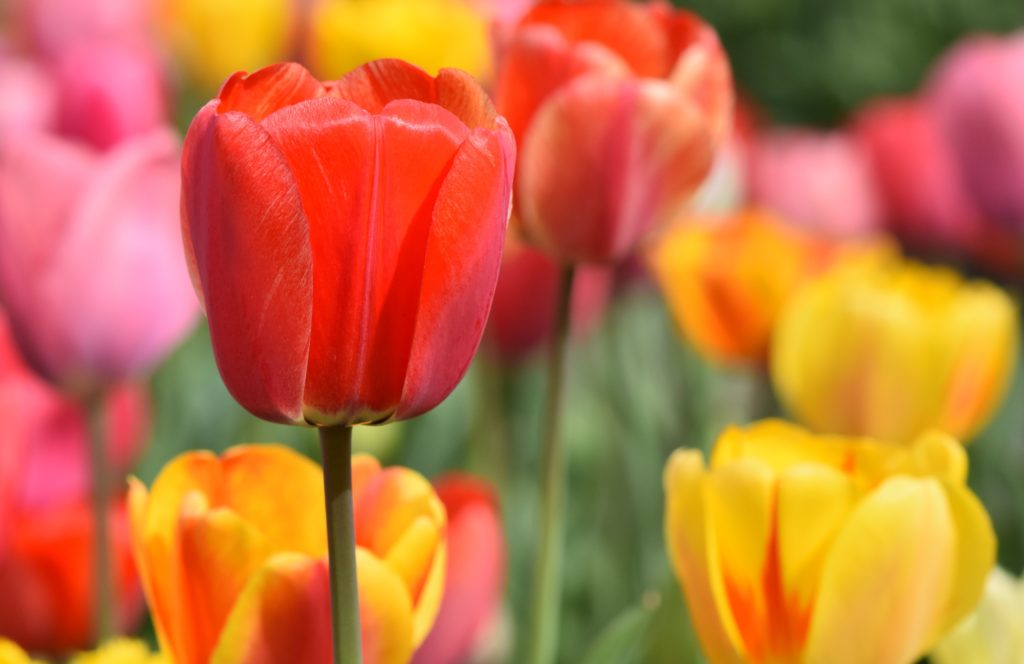
Tulips
Tulips prove a challenge for north Texas gardeners. The most popular variety of tulips, known as Darwin hybrid tulips, must be treated as annuals since they will not repeat or naturalize in our warm, clay soils. They also require an extended period—up to ten weeks—in temperatures between about 45 and 50 degrees Fahrenheit. Our soils simply do not get that cold.
If you want to give these tulips a try, look for pre-chilled bulbs. The Garden buys its bulbs early in the fall and chills them in its own refrigerators. However, pre-chilled bulbs can be ordered online, or you can contact local nurseries to see if they have pre-chilled varieties in stock.
Another option for tulip-lovers is to plant what are known as species tulips. These diminutive beauties hearken back to the very first tulips, the little bulbs that have given rise to all the big showy hybrids. If given good drainage, species tulips come back year after year, and those adapted to our area require no cold treatment to induce flowering. They are excellent for rock gardens and the front of borders.
Some excellent options include:
• Tulipa bakeri ‘Lilac Wonder,’ a native of Crete, has flowers that are a pale lilac-pink with a yellow center and are about three inches across. The flowers bloom about the same time as bluebonnets and could even be interplanted with them. The foliage is less than six inches tall. This bulb is a better bet for our area than crocus because the flowers are bigger and the bulbs naturalize better.
• Tulipa clusiana var. chrysantha has flowers with petals that are red on the outside with a bright golden yellow interior. Total height is six to eight inches.
• Tulipa linifolia has bright scarlet flowers with pointed petals and a jet black center. The red-edged leaves beautifully complement the blooms. This heirloom bulb dates to 1884 and reaches a mature height of four to six inches.
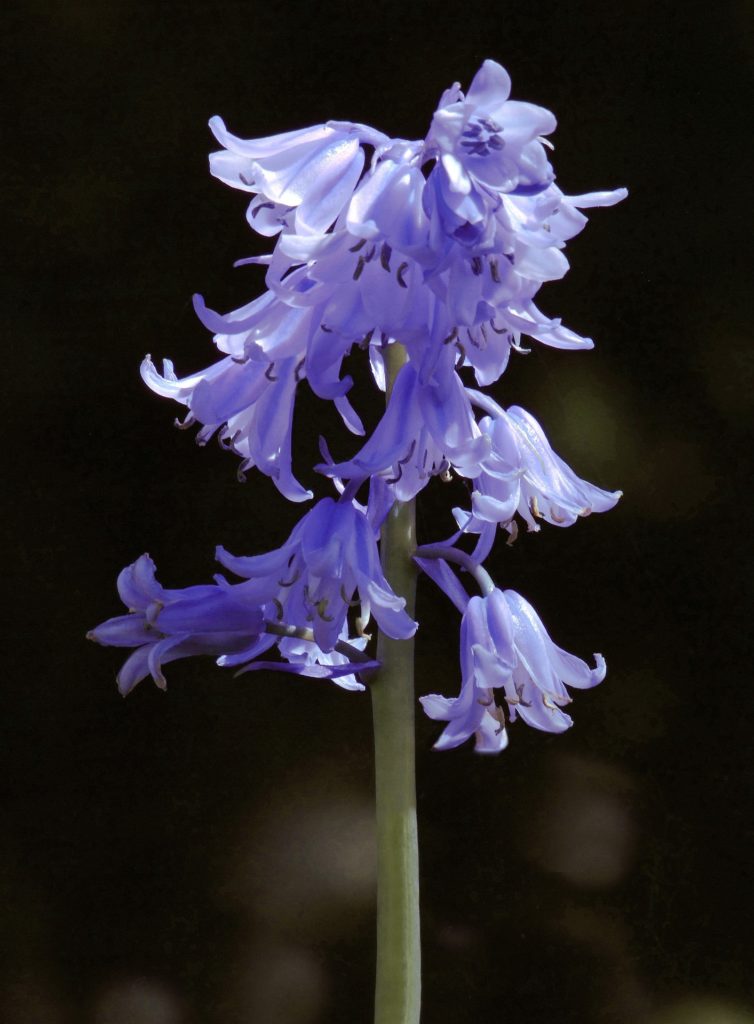
Other Spring-Flowering Bulbs
Don’t limit yourself to tulips and daffodils. Seek out the following bulbs for even more spring color:
• Hyacinthoides hispanica, or Spanish bluebells, have lovely bell-shaped flowers on 15-20” stems. These adaptable plants tolerate dry shade beneath trees, and they bloom in mid-spring when the trees begin to leaf out. They will also thrive in full sun. They look lovely with late daffodils and tulips, planted among low ground covers such as Vinca, or in front of azaleas. They also make good cut flowers. A variety called ‘Excelsior’ has deep violet-blue flowers that are darker and larger than most. It is also an heirloom bulb dating back to 1906.
• Gladiolus communis ssp. Byzantinus, also known as Byzantine gladiolus, cornflag, corn lily and hardy gladiolus, makes another colorful—and heirloom—addition to the spring garden. In April, orchid-like blossoms rise above the sword-shaped foliage. The hooded blossoms are bright magenta, and up to fifteen florets can line the 24” stems. This gladiolus is hardy and doesn’t need staking; it makes a nice cut flower, too.
• Leucojum aestivum, or summer snowflake, has flowers that look like little white, inverted bells with green dots on the outside of each petal; the overall appearance of the flowers is quite dainty. The foliage looks very much like daffodil foliage, only a little darker green, and it grows to 15” or so. Summer snowflake naturalizes beautifully, so plant large drifts for a graceful, natural look. A variety called ‘Gravetye Giant’ is a particularly robust selection with much larger flowers than the species. It was introduced by William Robinson, the influential 19th-century Irish garden writer. The foliage on ‘Gravetye Giant’ reaches a height of 18-24”.
With bulbs, a little hard work now will reap great rewards come spring, for both the Garden and your very own home.

